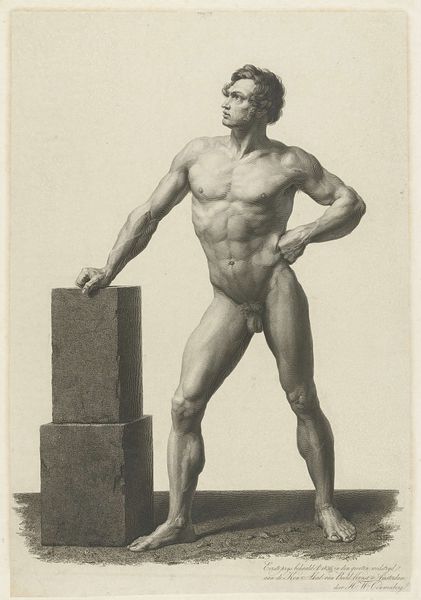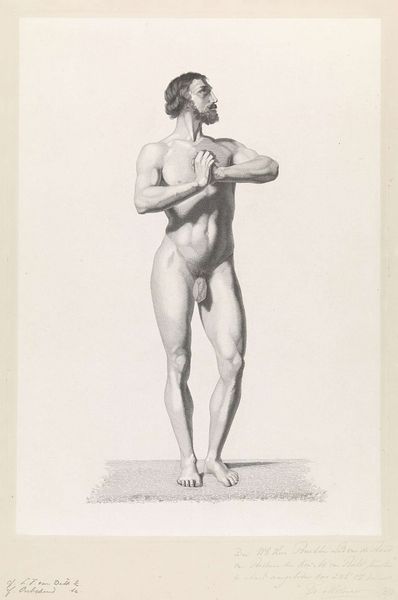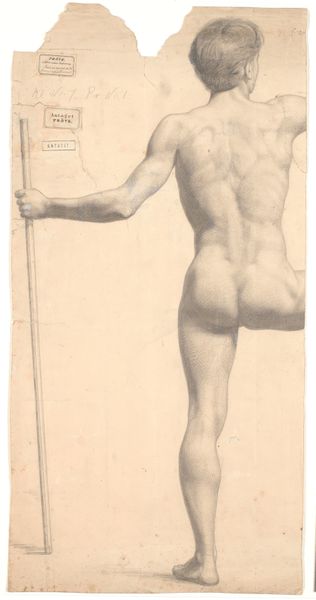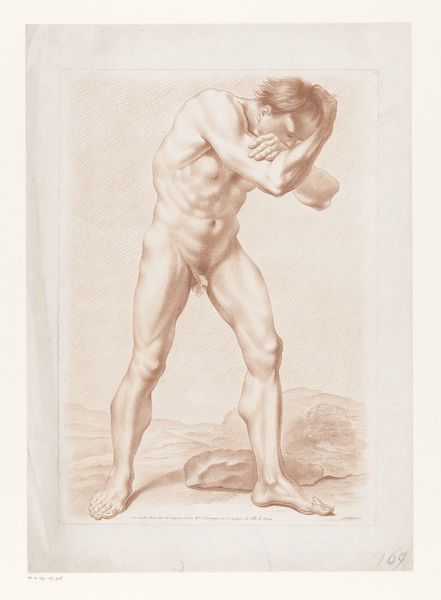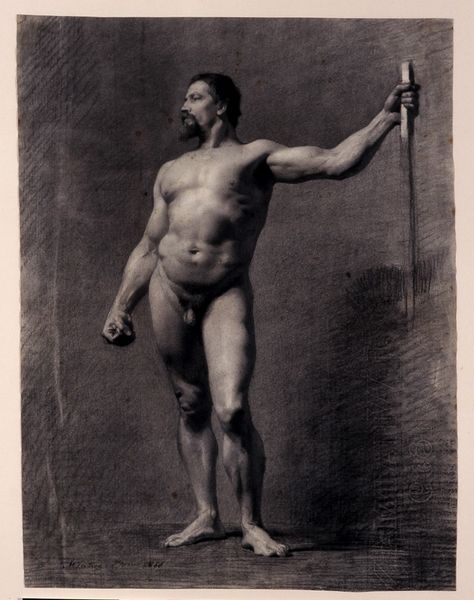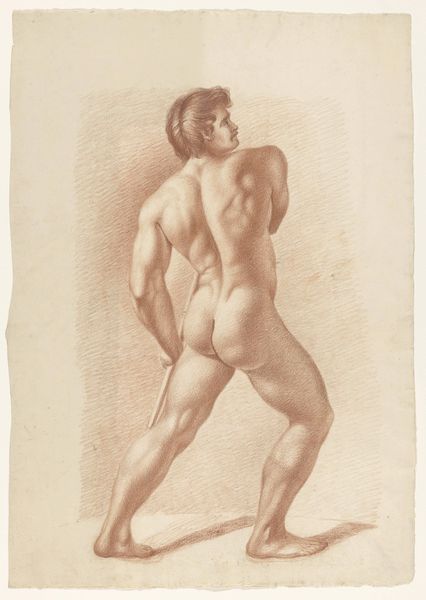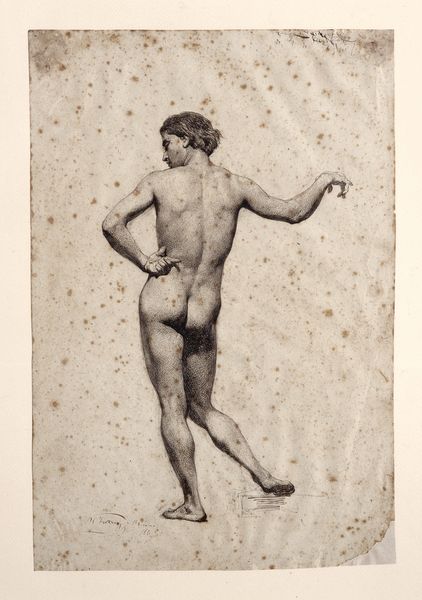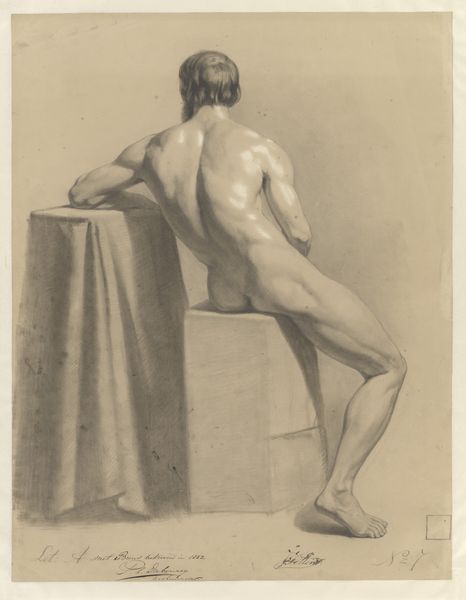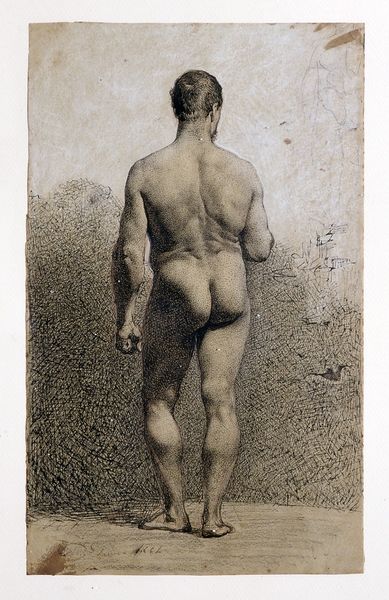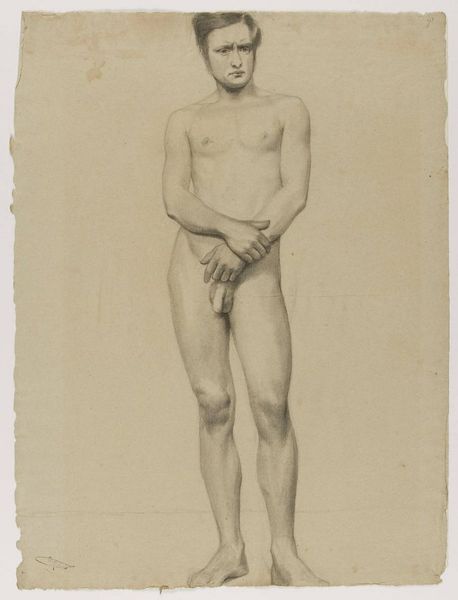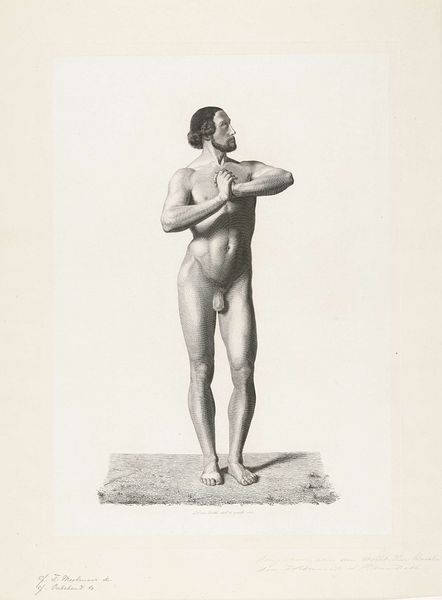
drawing, pencil, graphite
#
portrait
#
drawing
#
neoclassicism
#
charcoal drawing
#
pencil drawing
#
pencil
#
graphite
#
academic-art
#
charcoal
#
nude
#
graphite
Dimensions: height 430 mm, width 324 mm
Copyright: Rijks Museum: Open Domain
Curator: Here we have "Standing Male Nude near Stone Block," a graphite and pencil drawing from 1836, created by Dirk Jurriaan Sluyter and residing here at the Rijksmuseum. Editor: Oh, hello there! My first thought? He seems...contemplative. Like he's just waiting for someone to tell him the next step in his hero's journey. Is he a bit overdressed for it, though? Curator: That reading resonates! In art academia of the period, drawing from nude models like this was crucial training. It wasn't necessarily about arousal or scandal but was central to a system of representing ideal human form rooted in classical sculpture and aesthetic values. Editor: See, there's a seriousness that just vibrates off him. Like he's pondering deep, ancient secrets...or maybe just wondering where he left his toga. I think that stony thing is important here... It's solid and square. Reminds me of an existential obstacle! Curator: Precisely. Neoclassicism sought to revive those "ancient secrets"—to revive values perceived as rational and ordered. This drawing, in its attempt to depict an idealized masculine figure alongside geometrical shapes, does just that. However, who exactly benefitted from these depictions of supposed harmony? It demands a closer look at social hierarchies—racial, class, gendered—at the time. Editor: Oof, heavy. Maybe he *is* overwhelmed. Now I see a bit of the weight, he doesn't get to participate in history, he *is* history to the guys who came before, you know? It reminds me of that story, this artist drew the 'ideal body,' yet never got to celebrate anything except physical form. Tragic. Curator: Definitely tragic! Also note, to understand how we see art, it is critical to remember, what wasn't depicted is equally if not more revealing of power dynamics: Whose bodies were considered worthy, whose stories were being told, whose perspectives did these images reinforce? The narratives in art matter immensely. Editor: Absolutely, there are no empty visuals, right? All things represent something at one point. Like here: Even this fella, looking pensive in his, er, birthday suit, against the backdrop of history, he reminds us that those narratives need *our* reflection, to reveal deeper stories. Curator: I think I see it like that too, that everything we bring to understanding unlocks what images hold. Editor: So cool to be aware now!
Comments
No comments
Be the first to comment and join the conversation on the ultimate creative platform.
